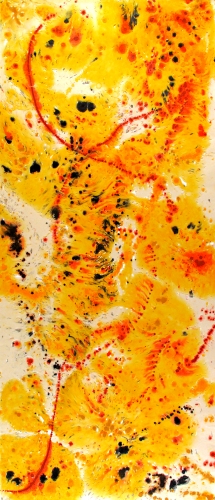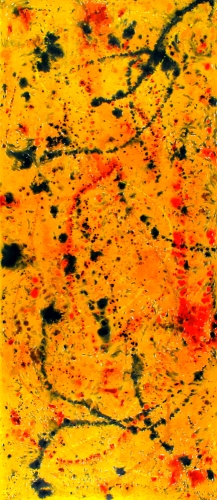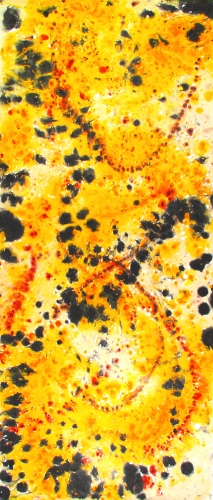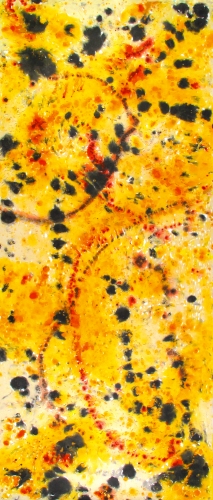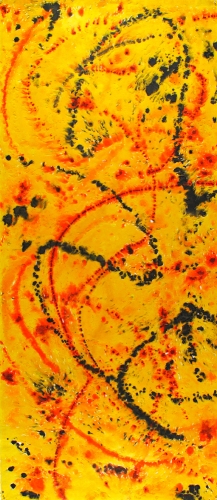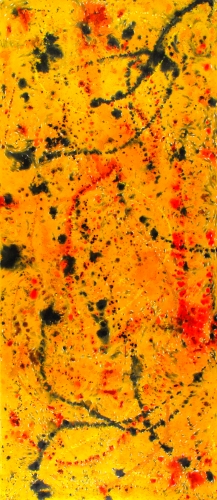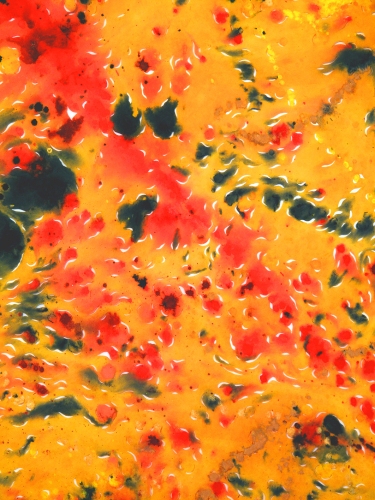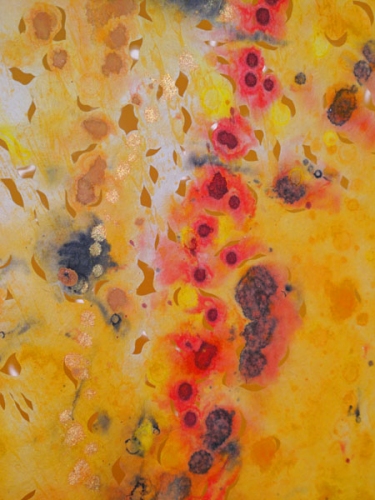Prasada/exaltation(2010) consists of 20 painted and hand-cut kitakata paper panels each measuring 90 x 38 inches.
The complete piece is meant to encircle a space, casting its shadows with a saffron and amber glow.
The act of spontaneous painting combined with the obsessive cutting is akin to the turn of the dervish, an ecstatic dance of surrender and yet with a great centered discipline. The turning is how the dervish becomes an empty place where human and divine can meet, a resonance with universal soul.
Prasada means “mercy or grace” and refers to a mental state marked by spontaneous generosity or anything that has been sanctified through offering to God. The act of painting is the devotional offering and the visual manifestation is given back through grace.
The complete piece is meant to encircle a space, casting its shadows with a saffron and amber glow.
The act of spontaneous painting combined with the obsessive cutting is akin to the turn of the dervish, an ecstatic dance of surrender and yet with a great centered discipline. The turning is how the dervish becomes an empty place where human and divine can meet, a resonance with universal soul.
Prasada means “mercy or grace” and refers to a mental state marked by spontaneous generosity or anything that has been sanctified through offering to God. The act of painting is the devotional offering and the visual manifestation is given back through grace.
prasada/exaltation
